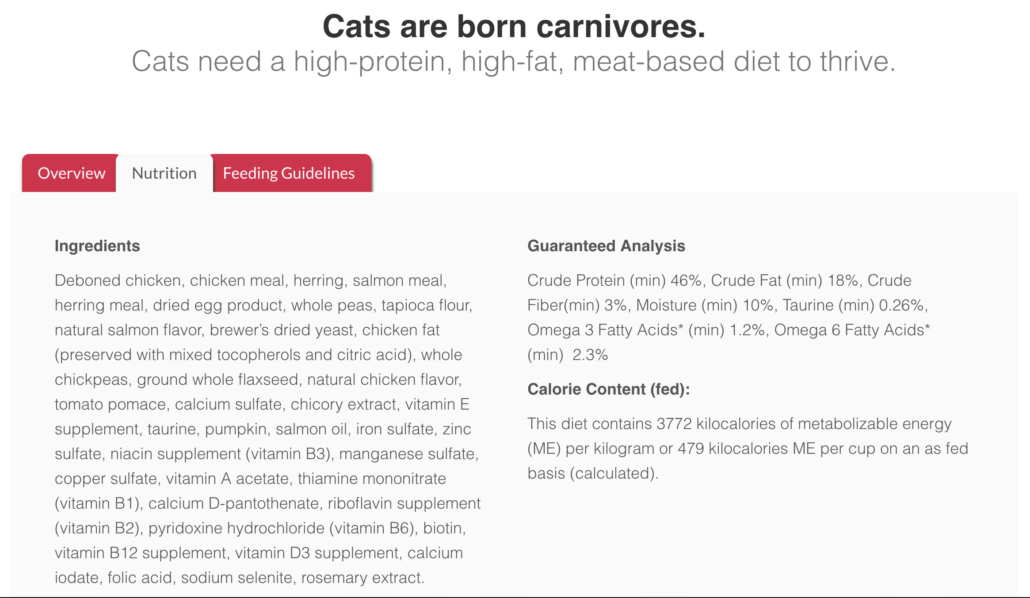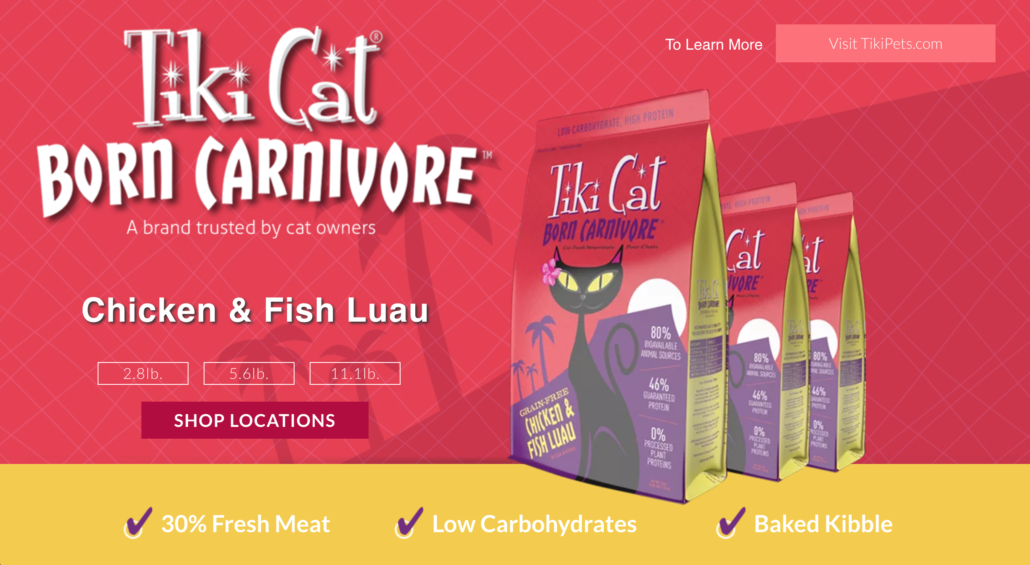How to Decipher Pet Food Labels & Misleading Marketing
All pet food companies, organic, natural, prescription, large or small, want you to believe that their product is the best and right product for your animal. They draw you in through the images, colors and claims they make on the packaging. The claims contain keywords that play off current trends, such as “gluten free,” “fresh meat,” “grain free,” or “carbohydrate free.” However, claims can be misleading and it’s very important to your animal’s overall health and wellbeing that you understand how to decipher your pet food label.
The Commercial Pet Food Industry had its beginnings in the early 1900s. It started off by offering canned dog food, then when resources became limited during WWII, commercial pet food shifted to kibble. Kibble used fewer resources and was convenient and cost effective to make. By the 1950s kibble was and still is the most popular form of pet food. In 1976, Hill’s Pet was acquired by Colgate-Palmolive. This acquisition and their marketing strategy would forever alter consumer perception of the meaning of “pet food.”
Colgate’s marketing strategy for Hill’s Pet was based off their success using dentists recommending their dental products. The newly acquired Hill’s Science Diet got involved in vet schools by providing free lectures on companion animal nutrition, free or discounted pet food to students and staff, and funding research for graduate programs. Because of this marketing strategy, Hill’s Science Diet went from a $40 million dollar company in 1982 to a $1 billion dollar company in 1999. They are now the largest manufacturer of prescription pet food and sell their products in 86 countries worldwide.
Less than 10 companies account for 85% of the US market share. This means that just a handful of companies have a very large influence over the consumer perception of pet food. For instance, when you think about “Dog Food” or “Cat Food” what image comes to mind? I know that for many the image is of kibble. Most people do not think of fresh ingredients as “pet food” but interestingly enough, images of fresh whole foods are often depicted on the packaging of numerous bags of kibble. Clever marketing wants the consumer to believe that you are feeding whole food ingredients but in reality the ingredients that make up all kibble go through a high heat, double cooking process that significantly reduces the nutritional value of the food.
Tiki Cat “Born Carnivore” is a perfect example of this:
First let’s look at the name: Born Carnivore. The company wants you to know that they too understand and appreciate that your cat is a carnivore, and that this is just the right food for your cat. But, perhaps the most misleading claim on the packaging is that there is 0% Processed Plant Protein. While this claim is technically true, it’s intention is to lead you into believing that the food is free of carbohydrates and full of meat. However if you take a closer look at the label, you will see that their carbohydrate takes the form of whole peas, whole chickpeas, and tapioca flour. Tapioca flour is a high glycemic starch used as a binding agent. Carbohydrates are not listed on most pet food packaging so you must either contact the company or use the following equation to determine the carbs in your food. Simply add all of the percentages listed, including protein, fat, fiber, moisture and ash, and subtract the total from 100.
It is important to remember that all kibble, even “Natural” kibble, is highly processed. Kibble is made through the process of extrusion. Extrusion is a high heat, high-pressure process that requires some type of starch to form the pellet. This starch can be peas, potato, tapioca, wheat, corn, or rice, just to name a few.
So, what’s a pet owner and animal guardian to do? When it comes to cats, kibble should be the very last food option. We understand that in a shelter environment it might not always be financially possible to feed canned or raw food to every cat, but it’s definitely the ideal.
As far as dogs go, they do have the ability to digest and utilize carbohydrates as an energy source. However, we always encourage people to incorporate as much minimally-processed food as their lifestyle allows. As a general rule of thumb, look for foods that are higher in protein and lower in carbohydrates. And remember that “grain free” doesn’t necessarily mean lower in carbohydrates. “Grain-free” kibble only means that the carbohydrate binder of choice is something other than grain, such as potatoes, lentils, or peas. Grain-free foods can be equally high in carbohydrates when compared to their grain-based counterparts.
On a final note, in the spirit of this election season, remember that we, the consumer, vote with our dollars. When we choose to support companies that provide fresh, minimally-processed foods we are supporting sustainable farming practices and the reality is that everything is interconnected. The health of your animal, your family, and the environment is all linked to our agricultural and food production systems. Let us all strive to become more conscious consumers, one step at a time.
Tiki Cat Born Carnivore:
- 80% Bioavailable Animal Sources
- 46% Guaranteed Protein
- 0% Processed Plant Proteins

The Tiki Cat food we’re reviewing is called “Born Carnivore.” While the company’s website and marketing copy imply all of the right things, it’s important to dig a little deeper…
Deboned Chicken: fresh ingredient, bones removed: not previously processed.
Chicken Meal, Salmon Meal, Herring Meal: dry rendered product from a combination of clean flesh and skin with and without accompanying bone, derived from a whole carcasses, exclusive of feathers, heads, feet and entrails.
Ah-ha! Whole peas and chickpeas are 2 of 3 carbohydrates used, however, because they have not been previously processed, it is considered a “whole” ingredient and therefore allows them to claim that there are 0% Processed Plant Proteins. Very tricky.

